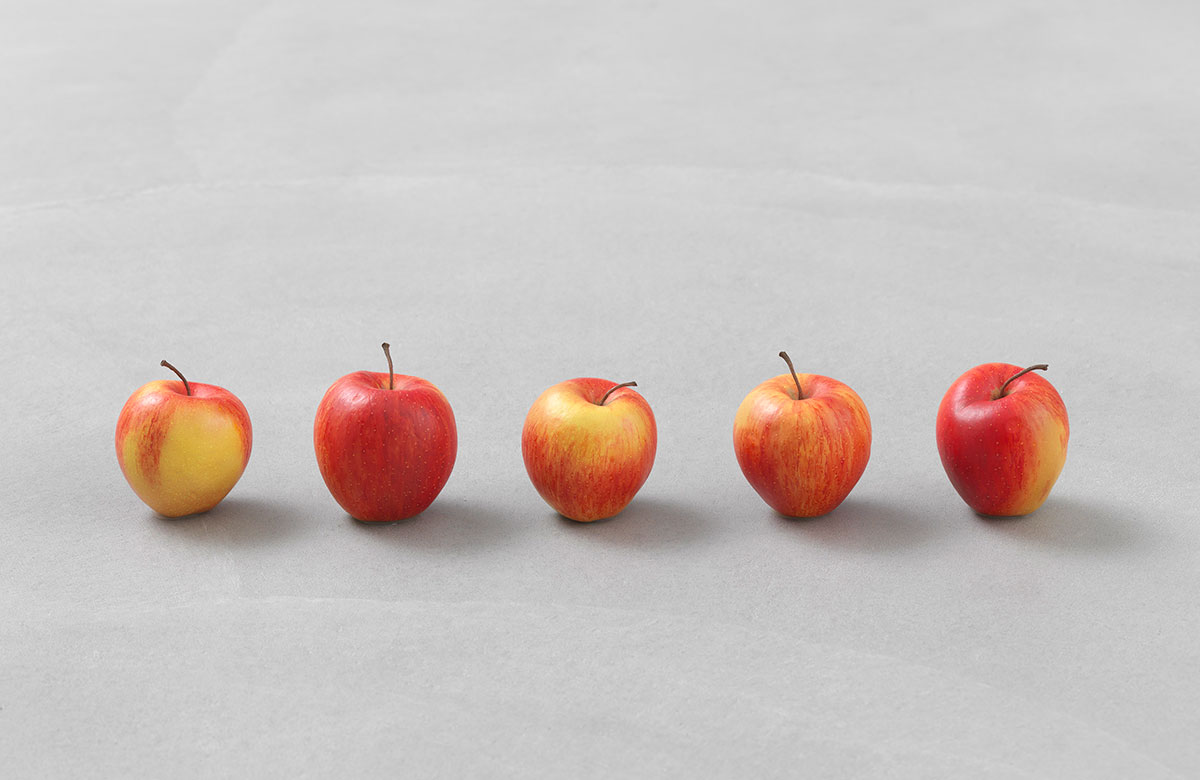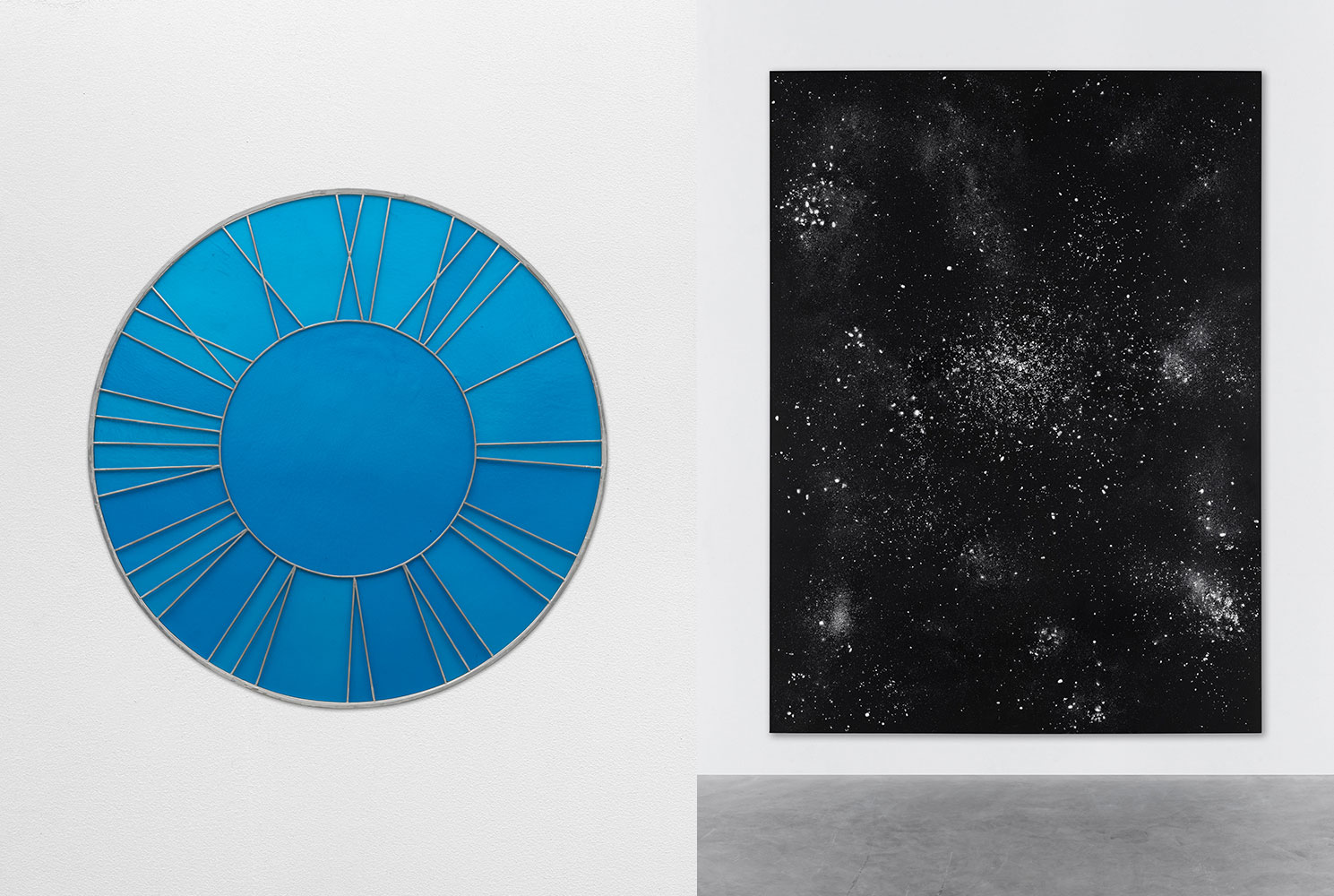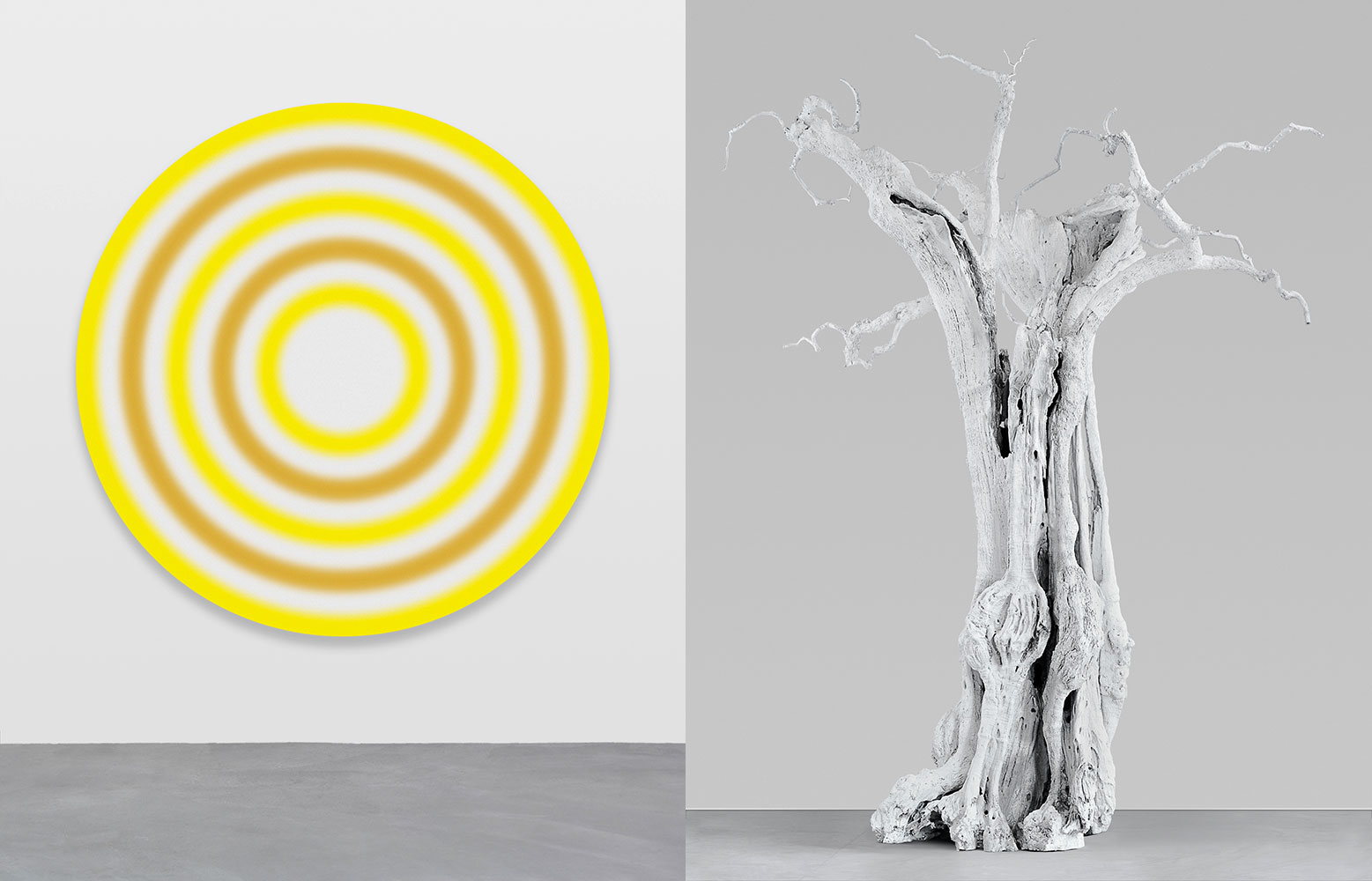PRESENTATION: Ugo Rondinone-Life Time
 Using photography, video, painting, drawing, sculpture, sound, and text, Ugo Rondinone particularly enjoys destabilizing the viewers’ perceptions and unsettling their certainties by developing surprising sensorial environments. Rearranging content and formal elements through a personal poetic filter while drawing directly on the outside world, he envelops the audience in a synesthetic experience.
Using photography, video, painting, drawing, sculpture, sound, and text, Ugo Rondinone particularly enjoys destabilizing the viewers’ perceptions and unsettling their certainties by developing surprising sensorial environments. Rearranging content and formal elements through a personal poetic filter while drawing directly on the outside world, he envelops the audience in a synesthetic experience.
By Dimitris Lempesis
Photo: Schirn Kunsthalle Archive
Ugo Rondinone in his solo exhibition “Life Time” presents key paintings, sculptures, and video works. In his works, he adds a poetic dimension to everyday things and phenomena. A tree, a clock, the sun or a rainbow – by means of repetition, isolation or reduction, he positions them in new contexts in his typically rather minimalistically arranged spaces, creating atmospheric ambiences. Specifically for the exhibition, he groups around eighty of his works into new constellations and sequences, creating a unique installation that extends along the entire length of the gallery, into the Rotunda, and onto the roof of Schirn Kunsthalle. In response to the location, the artist developed “curved standing landscape with entry door” (2022), one of his monumental landscape sculptures made of soil. Further, thousands of pictures of the moon, drawn by children especially for the exhibition, are presented under the title “your age and my age and the age of the moon” (2014– ). In addition to the main part in the gallery of the Schirn, the exhibition extends to the roof and both the exterior and interior of the Rotunda. Installed on top of the roof, “the rainbow life time” (2019), consisting of two curved words, can be seen from afar. The large illuminated letters that form the title, produced especially for this exhibition, are part of Rondinone’s rainbow series, which uses poetic word combinations to convey inner moods and timeless truths and, as art in public space, is intended to reach as many people as possible. The rainbows explore themes such as day and night, homosexuality, freedom and tolerance, and, in the case of life time, the own lifetime and the enduring presence of a work of art. Another work that addresses time as an individual phase is displayed at the center of the publicly accessible outer area of the Rotunda. “Flower moon” (2011), a six-meter-high white enameled aluminum cast of a two-thousand-year-old olive tree that dominates the cylindrical architecture of the site, is an expression of an immense period of time as well as a memory that seems insignificantly small in the context of the universe. The main part of the exhibition is divided into five sections that extend across the entire gallery of the Schirn. A narrative unfolds that follows the transition from night to day, from darkness to light. The first and darkest room includes works from four series. The clown lying on the floor is part of a group of eight clown figures, collectively titled “if there were anywhere but desert” (2000–02) after a book of poems by Edmond Jabès, whose individual poems make up a coherent text. These are all casts of actual people. While the other seven figures are named after the days of the week, the clown presented at the Schirn bears the number zero as its title. He wears the mask of Pierrot, considered sad and melancholic, and refers historically to the latter’s Romantic phase in the Commedia dell’Arte. The sculpture is surrounded by seven large-scale images of stars from the series “star” (2008–12).
In the next room, dominated primarily by brown tones, is a work conceived especially for the Schirn. “Curved standing landscape with entry door” (2022) is part of a series started in 2013 of site-specific sculptures made of soil. The monumental wall made of a special mixture of soil follows the curve of the Rotunda’s architecture like a vertically tilted piece of natural ground. This, too, reflects Rondinone’s basic principles: a piece of the environment outside is brought inside, where reality becomes fiction and nature becomes art. The artist refers to Land Art of the 1960s and evokes associations with the monumental sculptures by artists such as Richard Serra. Spread across the floor are thirteen seated, life-size figures. The exploration of the relationship between culture and nature, permanence and transience, inside and outside, continues in the large installation made up of three series in the next room of the exhibition. The five amorphous, gray stone sculptures of the twenty-part series “we run through a desert on burning feet, all of us are glowing our golden faces look twisted and shiny.” (2008) reveal clear references to Classical Modernism such as works by Henry Moore and Auguste Rodin. Loosely based on Chinese scholar’s rocks, whose creator is considered to be nature itself, the sculptures establish a connection between the spiritual and the natural worlds. They resemble cloud formations in which each viewer may discover something individual or personal. These works are complemented by the series “diary” (2005–15), black-and-white drawings on canvases primed with plaster. For the most part, they are studies of windows that seem like sketches of actual scenery, suggesting intimacy and privateness. The film installation “it’s late and the wind carries a faint sound as it moves through the trees (…).” from 1998 fills the fourth room with blue light. The installation consists of twelve sequences presented on six screens in a continuous loop. This arrangement alone suggests the motif of the endless repetition of everyday human activity, synchronized by the rhythm of the song “Everyday Sunshine” by Fishbone. A woman keeps entering a dark room; a man constantly moves a curtain back and forth—no further context is provided. The imagination of the observer defines the scenery, which remains open in terms of content. Eight works with the title “pure sunshine” (2012) illuminate the brightest and final room of the exhibition in radiant yellow. Also known as mandalas or target paintings, the circular images that Rondinone began painting in 1992 create the impression of movement with pulsating, vibrating contours, placing them in the tradition of Op Art.
Photo: Ugo Rondinone, still.life. (five apples in a line), 2011, cast bronze, lead, paint, 5 parts, © Ugo Rondinone, Courtesy the artist and Galerie Eva Presenhuber, Photo: Stefan Altenburger Photography, Zurich
Info: Curator: Matthias Ulrich, Schirn Kunsthalle, Römerberg, Frankfurt, Germany, Duration: 24/6-18/9/2022, Days & Hours: Tue, Fri-Sat 10:00-19:00, Wed-Thu 10:00-22:00, www.schirn.de/

Right: Ugo Rondinone, erstermärzzweitausendundneun, 2009, acrylic on canvas, plexiglass plaque with caption, 430 × 320 × 4.5 cm, © Ugo Rondinone, Courtesy the artist and Galerie Eva Presenhuber, Photo: Stefan Altenburger Photography, Zurich


Right: Ugo Rondinone, flower moon, 2011, Cast aluminium, white enamel, 650 x 250 x 170 cm, Courtesy the artist and Gladstone Gallery, New York and Brussels, Photo: Stefan Altenburger


Right: Ugo Rondinone, zero zany zone, 2019, wood, fittings, varnish, 293.5 × 266.5 × 24 cm, © Ugo Rondinone, Courtesy the artist and Galerie Eva Presenhuber, Photo: Courtesy Studio Rondinone
